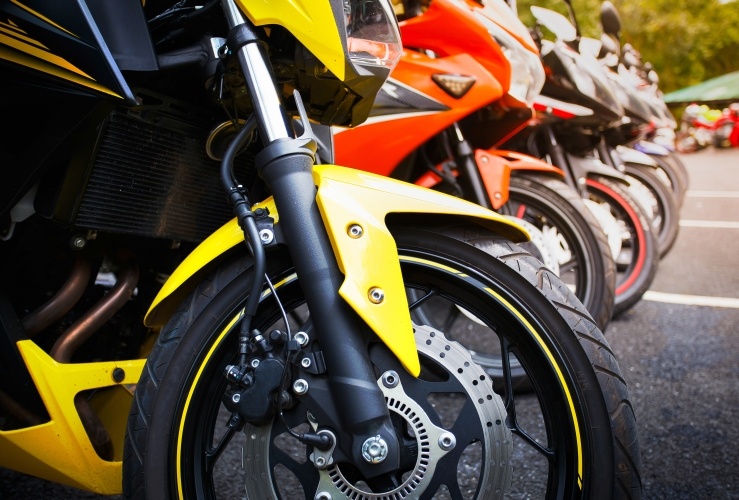
Your tyres are the only thing between you and the road. Taking good care of them will make for safe, comfortable and economical motorcycling.
Your motorcycle's tyres provide traction, resist wear and absorb the shock of irregular riding surfaces. They connect your motorcycle to the road and are intrinsically related to your machine's suspension, therefore directly affecting braking, safety, fuel economy, noise and comfort.
Ideally you should check your tyres for excessive wear every week. Do this in good light. Tread depth should not exceed the UK legal minimum of 1mm, although it is prudent to change your tyres long before they reach this point. Worn tyres give you less grip – especially in the wet.
Aside from reaching the legal tread wear limit, there are other reasons why you may need to replace your tyres:
Puncture: If you have a tubeless tyre and suffer a puncture from a nail or other pointed object, you should be able to patch it yourself. However, star-shaped holes, cuts and side-wall damage will require the attention of a professional: they will be able to tell you if the interior chamber is damaged beyond repair – or not.
Tube-type tyres can be fixed by the road, but are far trickier. Most riders will call for roadside assistance.
Signs of age: How quickly a tyre ages depends on many factors: usage, weather conditions, storage, load, speed, riding style, tyre pressure – to name a few. Any signs of age should be taken seriously. If your tyres are over 5 years old, they should be inspected by a professional.
Wrong tyres: Both tyres should have the same tread depth. Balance and stability can be adversely affected by different designs and tread patterns.
Changing either tubed or tubeless tyres requires plenty of muscle power and some preparation. The first time will of course be the most challenging, but you could save money by doing it yourself and you won't have to waste time waiting for a garage to complete the task.
You'll need a suitable set of tyre levers and a tyre valve key. Investing in some hard plastic tyre protectors should prevent the aluminium and paint beneath being scratched.
The manufacturer of your tyres will specify the optimum inflation pressure per square inch (PSI) based on the tyre's speed rating and weight.
- Over-inflated tyres can reduce road grip, making your motorcycle harder to control.
- Under-inflated tyres can heat up more quickly, potentially blowing out while riding – an experience to be avoided. Under-inflation can also lead to tyre damage and reduced life span.
You may be able to tell whether your tyre is inflated to the correct pressure by eye. However, a pressure gauge will give you an exact reading. Be sure to gauge pressure when the tyre is 'cold' – i.e. at least three hours after being ridden. When a tyre has been used recently the air inside will have expanded, giving a false pressure reading.
Air compressors can be found at most, if not all, petrol stations in the UK. Some compressors feature a pressure gauge so you can easily tell when the tyre is at the recommended pressure level.
Your tyres will last longer if they are kept clean. Wipe grit and mud off with rags, a scrubbing brush and an acid-free soap formulated specifically for motorcycles. Be sure to rinse the tyre properly, taking care to remove any soap from the treads.
Take it easy when you have a new set of tyres fitted, or when riding a new motorcycle with fresh tyres. New tyres have a shiny substance on them from the manufacturing process. This will wear off quickly, but in the meantime could reduce friction with the road. Avoid rapid acceleration, hard braking and hard cornering. Take these precautions for the first 100 miles of use.




